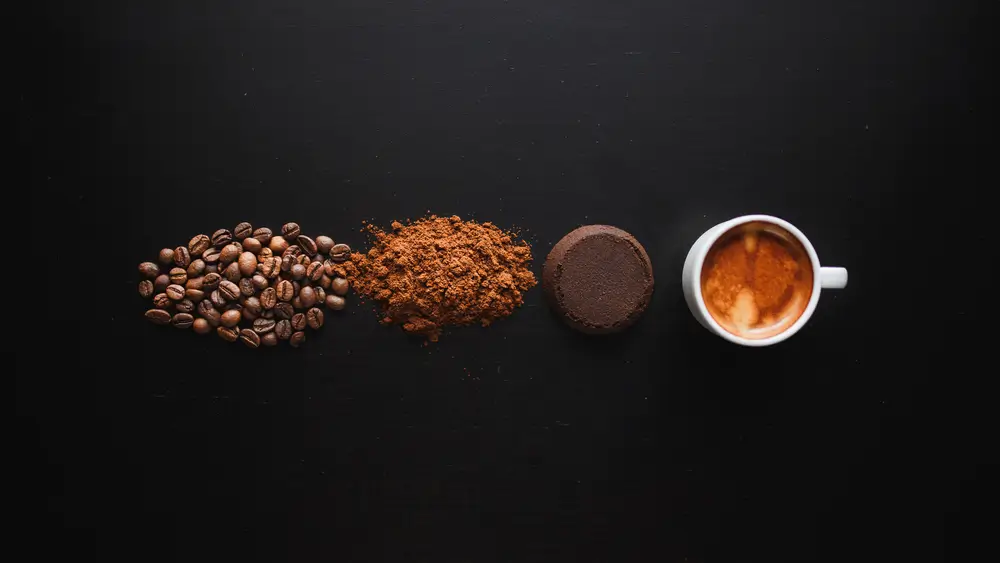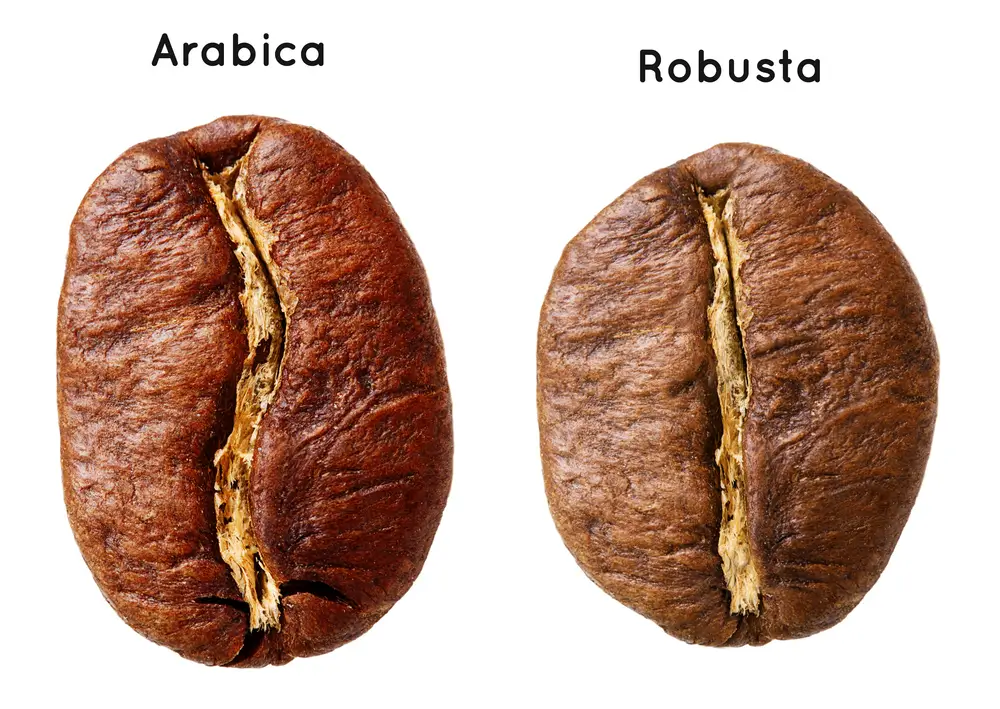Caffeine is a powerful central nervous system stimulant found naturally in over 60 plant species, with coffee beans, tea leaves, and cocoa pods being the most well-known sources. In the world of coffee, caffeine acts not just as a pick-me-up but as a complex compound that influences taste, aroma, and the overall coffee-drinking experience.
How Caffeine Works in the Body
Caffeine is celebrated for its ability to enhance alertness and combat fatigue, but how exactly does it achieve these effects? Understanding the mechanism behind caffeine’s impact can help coffee drinkers appreciate its benefits and also gauge their intake to avoid negative side effects.

Mechanism of Action
When caffeine enters the body, it quickly travels to the brain, where it exerts its most noticeable effects. Caffeine primarily works by mimicking the neurotransmitter adenosine, which normally promotes relaxation and sleepiness by slowing down nerve activity. Caffeine binds to adenosine receptors without activating them, effectively blocking these receptors and preventing adenosine from carrying out its natural role. This leads to increased neuronal activity and the release of other neurotransmitters like dopamine and norepinephrine, which enhance arousal, mood, and response times.
Immediate Effects on the Body
The immediate effects of caffeine can be felt within 15 to 30 minutes of consumption, reaching peak levels in the bloodstream within an hour and remaining potent for several hours thereafter. The most apparent immediate effects include improved concentration, increased alertness, and reduced feelings of fatigue. Caffeine also stimulates the release of adrenaline, which prepares your body for physical exertion by increasing heart rate, blood flow to muscles, and blood sugar levels.
Long-Term Impact
Regular caffeine consumption can lead to tolerance, meaning that over time, the same amount of caffeine will have a diminished effect. Additionally, long-term caffeine use can influence the quality of sleep and may lead to dependency, with withdrawal symptoms such as headaches, irritability, and drowsiness occurring if caffeine intake is suddenly reduced or stopped.
Measuring Caffeine in Different Coffee Types
The caffeine content in coffee can vary widely depending on the type of coffee bean, the brewing method, and even individual brewing habits. This variability is crucial for coffee drinkers to understand as it affects both the flavor and the physiological impact of their beverage.

Variability Among Coffee Types
- Espresso: Despite its intense flavor, a single shot of espresso (about 1 ounce or 30 milliliters) typically contains about 63 mg of caffeine, which is less than the 95 mg found in a standard 8-ounce serving of drip coffee. However, because espresso is often consumed in smaller amounts, its caffeine concentration is actually higher per ounce.
- Drip Coffee: This is the most common brewing method in the U.S. and typically results in a coffee with about 95 to 165 mg of caffeine per 8-ounce cup.
- French Press or Plunger: This method can extract a significant amount of caffeine since the coffee grounds are in longer contact with the water. An 8-ounce cup from a French press may contain up to 108 mg of caffeine.
- Instant Coffee: Generally contains less caffeine, ranging between 30 to 90 mg per 8-ounce serving, making it a milder option.
- Decaffeinated Coffee: While not completely caffeine-free, decaffeinated coffee typically has between 2 to 5 mg of caffeine per 8 ounces.
Factors Affecting Caffeine Extraction
The amount of caffeine extracted during brewing can be influenced by several factors:
- Grind Size: Finer grinds expose more surface area to water and can lead to a higher caffeine extraction.
- Brewing Time: The longer the brewing time, the more caffeine is extracted. For example, espresso’s quick extraction results in less caffeine per serving compared to coffee that is brewed for several minutes.
- Water Temperature: Hotter water extracts caffeine more efficiently, which is why cold brew, despite its long steeping time, has a slightly lower caffeine concentration compared to hot brewed coffee.
Factors Influencing Caffeine Levels in Coffee
The caffeine content in a cup of coffee is not just a product of the coffee type or brewing method, but also of several other factors that can significantly alter the potency and effects of the beverage.

Coffee Bean Varieties
The two primary species of coffee beans, Arabica and Robusta, have distinctly different caffeine contents. Robusta beans contain almost twice as much caffeine as Arabica beans, which not only contributes to their greater bitterness but also makes them more resistant to pests and diseases. The choice between Arabica and Robusta beans can significantly impact the caffeine content in your cup.
Roasting Process
Contrary to popular belief, the roasting level of coffee beans affects caffeine content only minimally. While darker roasts have a richer, more bitter flavor, they do not necessarily have less caffeine than lighter roasts. The loss of caffeine during roasting is minimal, and differences in caffeine content are more significantly influenced by the bean type and brewing method.

Grinding and Brewing Techniques
- Grind Size: The finer the grind, the more surface area is exposed to water, leading to a higher extraction of caffeine. This is why espresso, which uses a very fine grind, has a higher caffeine concentration per ounce even though the total caffeine content may be lower than in a regular drip coffee.
- Water Temperature and Contact Time: Hotter water and longer contact times generally increase caffeine extraction. Methods like the French press, which involve a longer steeping time, can extract more caffeine compared to a quick espresso shot.
Geographical Origin
The geographical origin of coffee beans also plays a role in caffeine content. Beans grown at higher altitudes often have less caffeine, as plants produce caffeine partly as a natural insecticide; fewer pests at higher elevations mean less need for caffeine. Therefore, coffee from places like Ethiopia or Colombia might have naturally lower caffeine levels compared to beans from lower altitudes in countries like Vietnam.
Harvesting and Processing Methods
The way coffee cherries are processed after harvesting can also influence the final caffeine content. For example, beans processed using the dry method, where cherries are sun-dried with their pulp still on, tend to have slightly higher caffeine levels compared to the washed method, where the fruit is removed before drying.
Health Implications of Caffeine Consumption
While caffeine is appreciated for its ability to enhance alertness and provide an energy boost, it’s important to consider the health implications associated with its consumption. This section explores both the benefits and potential risks of consuming caffeine, particularly from coffee.

Benefits of Caffeine
Caffeine consumption has been linked to several health benefits:
- Mental Alertness: Caffeine’s primary benefit is its ability to increase alertness and reduce the feeling of fatigue.
- Physical Performance: It can enhance physical performance by increasing the release of adrenaline, which prepares the body for intense physical exertion.
- Metabolic Rate: Caffeine can increase metabolic rate in the short term, potentially aiding in weight loss or maintenance.
- Neuroprotective Effects: Some studies suggest that caffeine may offer protection against certain neurodegenerative diseases, such as Parkinson’s and Alzheimer’s.
Risks of Caffeine
However, caffeine consumption is not without its risks, especially when consumed in large amounts:
- Sleep Disruption: One of the most common side effects of caffeine is its ability to disrupt sleep patterns, causing difficulty in falling asleep or staying asleep.
- Anxiety and Jitters: High doses of caffeine can lead to feelings of anxiety, jitteriness, and even panic attacks in sensitive individuals.
- Heart Health: While moderate caffeine intake is safe for most people, excessive consumption can lead to heart palpitations and increased blood pressure.
- Dependency and Withdrawal: Regular consumption of caffeine can lead to physical dependence, with withdrawal symptoms including headache, fatigue, and irritability when intake is reduced.
Conclusion
Caffeine is revered for its energizing effects and its integral role in various cultures’ daily rituals. Through this exploration of caffeine in coffee—from how it affects our bodies to the factors that influence its content in different brews—we’ve seen that caffeine is not just a simple stimulant but a complex compound with significant impacts on health and well-being.
Stay tuned for more coffee brewing guides, recipes, and bean roasts.


